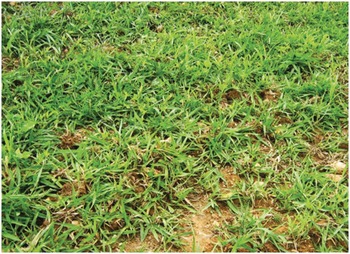Bermuda grass is usually the first plant to grow back after grass fires which happen very often in the african savanna.
African bermuda grass adaptations.
Bermuda grass is one of the most common grasses in the tropical savanna biome.
Bermuda grass can survive some flooding but does best on well drained sites.
Because the rainfall only lasts about half the year it is difficult for trees to grow in savannas but it s not impossible.
Originating in asia and or africa and used only for pastures in the beginning bermuda grass has been adapted by man for some of the most elite purposes such as athletics fields and golf courses world wide.
It can tolerate both acidic and alkaline soil and is highly tolerant to saline conditions.
Bermuda grass prefers wet and warm climates and where there is a decent amount of rainfall a year.
This type of dry grass can go long periods of time without water which is helpful for survival during the dry season.
Bermuda grass adaptations are that it has deep roots that collect more water.
Bermuda grass reproduces though seeds.
Bermuda grass will give out seeds about 3 months after planting it these seeds germinate at temperate above 20 c and begin to grow within 2 weeks.
The white sap from the candelabra tree is poisonous and if it comes contact with your skin it can cause blisters.
A bermuda grass is a perennial grass latin name cynodon dactylon native to africa and asia used in warm areas of the world for pasture lawn and making hay.
With its deep root system bermuda grass has adapted to the savanna by dying off above ground during periods of drought while maintaining growth beneath the soil.
Although it may persist under low fertility bermuda grass has a high nitrogen requirement for achieving a good quality lawn.
Candelabra tree adaptations are its very poisonous white sap.
Candelabra tree candelabra trees are found in the east indies and africa.
Improves digestion and cures stomach ailments increases the number of red blood cells good medicine for insomnia.
Bermuda grass is an early successional grass and is first to grow back after grass fires which burn quite often on the african savanna.
The bermuda grass that many plant in their lawns is native to the african savanna as is elephant grass which can grow 10 feet 3 m tall.
It is the most common type of savanna grass found practically everywhere.
Bermuda grass had originated from the savannas of africa.

